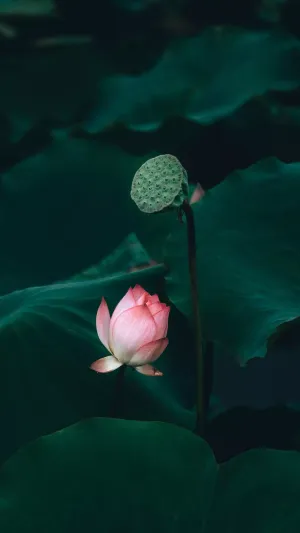Lotus typically thrives in wet environments such as lakes, calm shallow water, ponds, and swamps.
These plants require a constant source of water during their growth period, and even in winter, the soil must be kept moist to ensure their survival.
Lotus is generally distributed in subtropical and temperate regions such as Central Asia, West Asia, India, China, and Japan.
It is called a "living fossil" and is one of the earliest plants among angiosperms. Before human beings appeared, most of the earth was covered by oceans, lakes, and swamps. At that time, the climate was harsh, disasters were frequent and there were no animals. Most plants were eliminated, and only a few wild plants with strong vitality grew on this barren earth. Among them, there is a kind of aquatic plant that we call "lotus" today, which has withstood the test of nature.
The lotus typically blooms from July to September and produces full, neat, and ornamental flowers.
The temperature and humidity of the lotus growing environment have strict requirements. The requirements of different growth stages are various. Therefore, when the lotus grows, its light and humidity need to be paid special attention to.
The following are the environmental requirements of the lotus:
1. Water Quality
The water quality requirements of the lotus vary across different growth stages and seasons. For instance, during summer, the tank must be refilled every three hours.
2. Soil
Requires soft, fertile soil rich in organic matter. Therefore, when planning lotus, it is necessary to prepare suitable soil for it.
3. Light and Temperature Conditions
The optimum temperature for its growth is around 20-30°C. When the sun is full, the plant will grow vigorously and bloom luxuriantly. However, if the lotus is placed in a strong light environment for maintenance for a long time, the leaves will be easily burned.
The growth process of the lotus:
1. Germination period
(1) The germination period starts from planting and ends when the first floating leaf unfolds.
(2) During this period, the water depth must be controlled at about 1-2cm, and proper warmth should be carried out at the same time. This can prevent the seedlings from freezing to death due to low temperatures.
2. Seedling stage
(1) The seedling stage begins when the first floating leaf is fully expanded and ends when the standing leaf grows.
(2) At this time, the water depth can be controlled at about 3-5cm. Every day, the lotus should be exposed to the sun, and the temperature of the water should be increased, which can help the terminal buds to grow.
(3) Once the plant has grown 5-6 leaves, apply compound fertilizer, being careful not to let it touch the leaves.
3. Standing leaf stage
(1)During the period when the vertical leaves are growing and until the flower buds start to emerge, the temperature is relatively high, which causes water to evaporate quickly. Therefore, it is essential to water the plant regularly to ensure that the water in the flowerpot is always full.
(2) At the same time, more fertilizer should be applied. Apply compound fertilizer every 20 days, and be sure to remove the yellowed leaves. The petiole of the removed leaves must be above the water surface.
4. Flowering period
(1) From the beginning of budding to the end of fruit ripening, the temperature at this time is still high, and the consumption of water and nutrients will be relatively large.
(2) Add water frequently. After the fruit gradually matures and the leaves turn yellow, it is necessary to reduce or stop fertilizing.
5. Dry and yellow period
When the fruit is ripe, the part above the ground turns yellow and withers. At this point, we simply need to ensure that the potting soil remains moist, remove the dead leaves, and then cover the plant with plastic film to keep it warm.
6. Dormant period
The dormancy period is after the withering and yellowing period, and before budding in the second year. We must take good cold protection measures to allow the plants to survive the winter safely.





